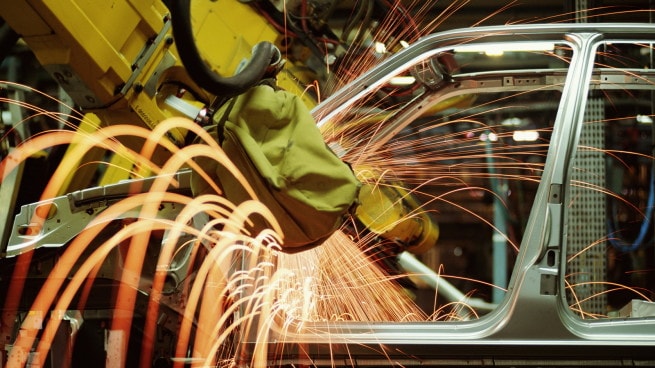Between 1956 and 1961, the U.S. steel industry's
unit cost for scrap declined relative to that of Japan. This
was due pr imar ily to increased unit purchases by Japan. Over
the next 11 years, Japan's unit costs for scrap generally
declined relative to those of the U.S. as Japan's unit purchase
of scrap declined. U.S. unit purchases of scrap remained
relatively constant over both per iods and there was no clear
trend in relative prices of scrap. In 1973, the relative unit
scrap cost for the U. S. declined sharply due to a relatively
sharp rise in the Japanese price. In 1974, however, further
decreases in Japan's unit purchases of scrap and an increase
in the U.S.
relative price carried the U.S. relative unit cost
above the 1972 level. A further decline in Japanese unit purchases carried the relative U.S. unit cost even higher in 1975.
In 1976, the U.S. relative unit cost declined somewhat in spite
'of a relatively large increase in the U.S. scrap price because
U.S. unit scrap purchases increased relatively less than those of
Japan.
-121-
Coking Coal. From 1956 through 1960, Japan's unit cost
for coking coal decreased relative to that of the U.S. due
primarily to improved trading agreements which brought'decreas.es
in Japan's price of coking coal. After 1960, the U.S. unit
cost of coking coal decreased somewhat relative to Japan's
(as the U.S. industry cut its unit purchases) but there was no
clear trend, at least through 1971. In 1972, the relative unit
cost rose for the U.S. above the 1960 levêl;' and in 1973, it
rose further. Japan cut its unit purchases more sharply than
the U.S. and, at the same time, the U.S. price rose more rapidly
than that facing Japan. In 1974, relative unit costs for coking
coal improved for the U.S.: but in 1975, an increase in the
U.S. relative price caused the relative U.S. unit costs to
exceed the 1973 level.
There was little change in 1976.
It might be noted here that during the 1970's the U.S.
steel industry's average acquisition cost for coking coal has
been con sider ably lower than the cost ind ica ted in our ser i es.
Major U.S. steel companies are heavily integrated into coal
production and acquire much of the coal which they purchase
under long-term contracts. The OPEC oil cartel engineered a
rapid rise in energy prices during the 1970's and this has been
reflected in the spot market price of coal (used in this study).
The average cost of producing coal in the steel industry's own
mines has increased at a much slower rate and long-term contracts have remained in force at the pr ice levels of earlier
years. Industry sources indicate that in 1975 the average
-122-
(
\
production cost for captive coal was probably 45 percent less
than the ii.arket price 10/ and existing long-term contract prices
were about 10 percent lower.

